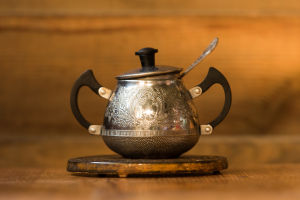Today, we’re diving into a topic that many often get confused—fluid retention and cellulite. These two conditions might seem similar, but they are different in many ways.
Let’s break it all down, Lykkers, so you can better understand how they work and how to manage them effectively.
What is Fluid Retention?
Fluid retention refers to the accumulation of excess fluid in the tissues of the body. It’s caused when fluid and toxins build up in the body, often due to lifestyle factors such as inactivity, poor eating habits, or incorrect posture. In more severe cases, it can be linked to health conditions such as heart or kidney problems, allergic reactions, or inflammation.
How to identify severe fluid retention: In extreme cases, fluid retention can lead to noticeable swelling and tightness of the skin, particularly in the legs, feet, and ankles. Pressing on the affected area can leave a persistent indentation, which is a sign of more serious fluid buildup.
Symptoms of fluid retention: Common signs include swollen hands, feet, ankles, and legs. The skin may feel tight or stretched in the affected areas.
How to Reduce Fluid Retention?
Make lifestyle adjustments: There are a few easy changes you can make to reduce fluid retention:
- Cut back on salt intake.
- Increase your magnesium and vitamin B6 intake.
- Eat more potassium-rich foods.
- Avoid refined carbohydrates.
Maintaining good hydration is also essential. Drinking enough water helps to flush out excess fluids and supports better circulation.
How Does Fluid Retention Contribute to Cellulite?
Fluid retention can make cellulite worse. When excess fluid accumulates in the tissues, it affects circulation, making it harder for the body to break down lipids. Toxins accumulate alongside lipid cells, which contribute to the formation of cellulite. Reducing fluid retention is a crucial step in preventing or minimizing the appearance of cellulite.
How to Tell the Difference: Fluid Retention or Cellulite?
Simple tests can help you determine the cause: Press the affected area with your finger for a few seconds. If a white mark remains, it’s likely fluid retention. If you pinch a piece of skin and small dimples appear, it may be early-stage cellulite.
What is Cellulite?
Cellulite is a skin condition that causes a dimpled appearance, often referred to as “orange peel” skin. It typically appears on areas such as the thighs, buttocks, abdomen, and hips. The condition arises from various factors affecting lipid tissue, circulation, and the skin’s surface. Genetics, lifestyle choices, and hormonal changes can contribute to its development.
Stages of Cellulite
Cellulite progresses through four distinct stages:
- The first two stages are marked by fluid buildup and fibrous tissue changes beneath the skin.
- In the third and fourth stages, cellulite becomes more severe, forming palpable nodules that can sometimes be painful to touch. The collagen fibers also change, leading to more noticeable and hardened lumps.
How to Prevent Cellulite?
While prevention isn't always possible, there are steps to minimize its appearance:
- Maintain a balanced diet rich in fiber.
- Avoid wearing tight clothing that restricts circulation.
- Engage in regular physical activity.
- Avoid stimulants and hormone-altering substances.
How Can a Dermatologist Help?
A dermatologist can guide you in managing both fluid retention and cellulite. They may recommend a combination of lifestyle changes, dietary adjustments, and low-intensity exercises such as walking, cycling, and swimming. Diagnostic tests, like blood work or an ultrasound, may be suggested to rule out other underlying health issues.
Specific treatments may include:
- Microtherapy, which involves injecting a hypertonic solution into the skin to help reduce fluid buildup.
- Mesotherapy, radiofrequency, electroporation, and cavitation therapy, which target lipid cells and improve circulation.
Do Anti-Cellulite Creams Really Work?
While they aren’t a miracle solution, some anti-cellulite creams can help. Creams containing caffeine have shown some effectiveness in reducing the appearance of cellulite. When combined with plant-based extracts like blueberry, green tea, birch, or Centella Asiatica, these creams may provide additional benefits, though they are best used in conjunction with other treatments for maximum effectiveness.
Final Thoughts
Understanding the differences between fluid retention and cellulite can help you manage both conditions effectively. While fluid retention can contribute to the appearance of cellulite, making adjustments in diet and lifestyle can go a long way in improving the situation.
Remember, consistency is key, and while certain treatments can help, maintaining a healthy routine is your best defense. Stay hydrated, eat well, and keep moving—your body will thank you for it!


